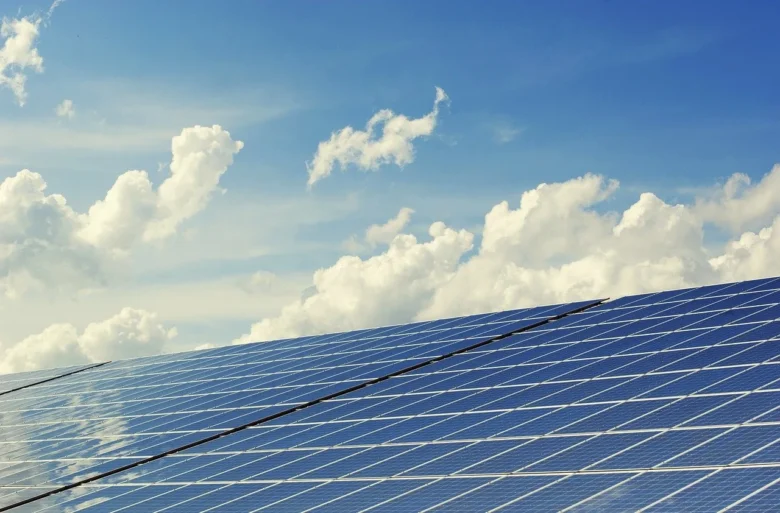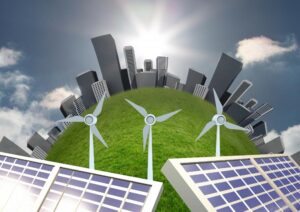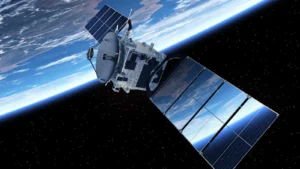Solar technology has come a long way in recent decades, making it one of the most promising and fastest-changing areas of green energy. These improvements not only make solar energy more efficient and cheaper but also make it more useful in more areas. New developments in solar technology are changing the way we use and harness the power of the sun. These include smart grid integration and new photovoltaic materials. This article discusses recent developments in solar energy technology and how they are changing the way energy is used around the world.
1. New Photovoltaic Materials
Creating new photovoltaic (PV) materials is one of the most exciting areas of advancement in solar technology. Silicon-based solar cells have been the standard for decades. But now experts are investigating other materials that may be more efficient and cheaper to produce. For example, perovskite solar cells have received a lot of attention because they may be more efficient than silicon cells. These batteries are made of a material called perovskite. These materials have special crystal structures that absorb light well and move charge carriers easily. Solution processing and other simpler, cheaper methods can be used to make perovskite solar cells, making them a good option for large-scale production.
2. Better Performance and Efficiency
An important part of improving solar technology is improving its efficiency. The amount of sunlight that a solar cell can convert into usable electricity depends on its efficiency. A higher efficiency means that the same amount of sunlight can produce more energy. New developments make silicon and new photovoltaic systems more efficient than ever before. For example, commercial silicon solar cells are now more efficient than before thanks to improvements in cell design, surface passivation, and anti-reflection layers. In a very short time, perovskite solar cells became more efficient. Some laboratory-scale cells are now more than 25% efficient. Because things are improving so quickly, a lot of money and time will have to be invested to increase production and ensure the long-term stability of perovskite cells. Tandem solar cells also show impressive efficiency. Some configurations can achieve an efficiency of more than 30% by combining different materials whose light-absorbing properties work well together.
3. New Applications and Combinations
Advances in solar technology don’t just mean making solar cells more efficient; They also include new ways to use and integrate solar energy. Building-integrated solar photovoltaics (BIPV) is a rapidly growing field. This technology involves installing solar panels on roofs, sides of buildings, or windows. For example, transparent solar panels can be used as windows to let in light and generate electricity at the same time. This technology allows buildings to become self-sufficient power plants, meaning they do not need to source electricity from outside, and reduces overall energy costs.
Floating solar farms are another creative way to make the most of space and increase energy production efficiency. These solar panels are installed on water bodies such as lakes, ponds, and even oceans. Floating solar farms have many advantages, such as using less space, increasing efficiency through water cooling of the panels, and reducing the amount of water that evaporates from the surface under the panels. These techniques are especially useful in places where land is scarce and water evaporates quickly.
4. Add Smart Networks and Save Energy
To fully utilize solar energy and ensure a stable energy flow, it is necessary to add solar energy to the electricity grid. Smart grid technologies are an important part of this integration because they make it easier to control how energy is created, distributed, and used. Smart grids use high-tech sensors, communication networks, and data analysis to monitor and manage energy flows in real-time. This makes better use of solar energy, reduces energy waste, and makes the electricity grid more stable.
To address the problem that solar energy is not always available, energy storage options are also needed. Many people use batteries such as lithium-ion and solid-state batteries to store the extra solar energy gained during the day for use at night or when it is cloudy. Batteries are becoming increasingly useful for large-scale solar energy storage as their energy efficiency, lifespan, and cost-effectiveness improve. In addition to batteries, pumped hydro and thermal energy storage are also being explored as energy storage options that can be used in solar energy systems.
5. Future Prospects and Challenges
Solar technology has a bright future. As it continues to improve, it should become more efficient, cheaper, and useful in more and more situations. New technologies such as quantum dot solar cells and solar coatings could revolutionize the solar industry. Quantum dots are very small pieces of semiconductor that can be changed to absorb different types of light. This allows solar cells to become very efficient. Solar paint contains light-absorbing nanoparticles and can be painted on various surfaces to generate electricity. This makes solar energy a flexible and cheap option.
But before solar technology can reach its full potential, some issues need to be addressed. Ensuring that new photovoltaic materials such as perovskites are stable and have a long lifespan is important for their economic viability. To bring new products to market, it is also important to devise production methods that are both cost-effective and scalable. Adding large amounts of solar energy to the grid will also require improvements to grid infrastructure and the way energy is stored to remain stable and reliable.
Conclusion
Improving solar technology is changing the renewable energy landscape, making solar energy more useful, cheaper, and more flexible. Solar energy is becoming increasingly popular and useful thanks to new photovoltaic materials, higher efficiency, and advanced applications. To fully utilize solar energy and ensure a stable energy flow, smart grid integration, and energy storage solutions are necessary. As long as research and development continue to push the boundaries of what is possible, solar technology will be important towards a sustainable and low-carbon future.
FAQs
1. How can series solar cells work better?
Tandem solar cells work better because they have more than one layer of different photovoltaic materials, and each layer is better at capturing a different portion of the sun’s rays. Tandem cells are more efficient than single-junction cells. They can convert more sunlight into electricity because they stack the layers on top of each other.
2. Why is Building Integrated Photovoltaics (BIPV) a good idea?
Integrating solar panels into building materials such as roofs, facades, and windows is one of the many benefits of building-integrated solar photovoltaics (BIPV). It also reduces the need for separate solar installations. Buildings can become self-sufficient power plants with BIPV, reducing energy costs and improving the appearance of solar energy systems.
3. What are the advantages and disadvantages of mobile solar parks? How do they work?
Floating solar farms consist of solar panels placed on bodies of water such as lakes, oceans, and reservoirs. They have many advantages, such as taking up less space, being more efficient (because the water cools the object), and preventing water from evaporating from the surface under the panel. Floating solar farms would be especially useful in places where land is scarce and water evaporates quickly.
4. What role does smart grid technology play in the integration of solar energy into the electricity grid?
Smart grid technology is an important part of integrating solar energy into the electric grid because it makes it easier to control how energy is created, distributed, and used. Smart grids use high-tech sensors, communication networks, and data analytics to observe and manage the flow of electricity in real-time. This reduces energy waste, makes the electricity grid more stable, and makes optimal use of solar energy.
5. How does energy storage technology make solar energy generation more reliable?
Energy storage technologies such as lithium-ion and solid-state batteries can make solar power more reliable by storing extra energy generated during the day for use at night or after dark. As battery technology advances, their energy density, lifespan, and cost-effectiveness increase. This makes it easier for large solar systems to store energy. In addition to pumping water and storing thermal energy, other ways of storing energy can also make solar energy more stable.



